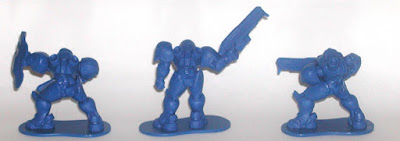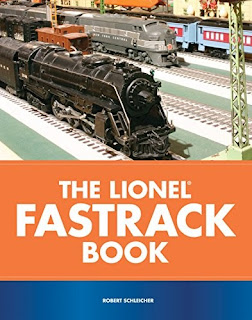I am pretty much unfamiliar with Starcraft and Warcraft. The only thing that caught my eye were these figures, which Billy Hill posted in the Army Men Homepage FB page. What with my recent work on sci-fi topics, I had to have them. They looked like superb characters for a sci-fi skirmish game.
Starcraft Terran Marines
|
I ordered a bag each of Terran Marines and Zerglings. What I gathered from a Starcraft fan site is that the Marines are armored and use weapons that fire metal spikes. The Zerglings are creatures with sharp appendages that can do great harm in hand-to-hand fighing. They seem to be a mix of insectoid, crustacean and reptilian features.
Terrna Marines and Zerglings
|
This reminds me of a starter set for Warhammer 40,000 from ten years or so past. We carried it in a hobby shop where I worked at the time. The game set had Space Marines versus a swarm of buglike critters. Starcraft’s Marines and Zerglings seem like a similar kind of nerdware.
On pages and sites of those selling the figures, each stated that each bag has nine figures. One said there were nine figure and six poses of the marines. He was mistaken. In reality, there are three each of three poses. The marines have one pose rushing with rifle pointed, one standing with rifle up, and one rushing with shield and rifle. There are three Zerglings in three poses. (Zergling sounds like something they would name a Pennsylvania beer). The figures have a lot of overhangs, which means they were originally molded in parts that were assembled prior to packaging. Marines are in light blue; Zerglings are brown.
Marines and Ajax Spacemen. Marines are shorter but just as thick.
|
Despite their thickness, the marines are about 54mm to 60mm size. It is their overall thickness that dwarfs Star Wars and Galaxy Laser Team figures. These guys are thick. The Zerglings have all sorts of appendages and it takes a while to figure which part is the head. Detail on marines and Zerglings is very nice. They could easily be fit into a game like Laserblade. (When I finish the Sci-Fi supplement for OMOG, I will have to accommodate figures like these. They are too cool!)
Marines with Galazy Lasrer Team. Marines are much larger.
|
The Terran marines resemble the space-marines of popular nerdware Warhammer 40,000. Of coure, they are not the same. I am sure that nerds who play both Warhammer and Starcraft can point out all the differences.
Zerglings with Galaxy Laser Team
|
These Terran marines and Zerglings would both look great if they were painted.
Marines and Hasbro Star Wars 54mm figures. Similar height, but the thickness of the marines makes the Star Wars figures look smaller.
|
Even if you do not want to add elements of Starcraft to skirmish games, you could use both Marines and Zerglings for other things.
Zerglings and Star Wars figures.
|
Good plastic sci-fi figures are a treasure. In 2015, we had Hasbro’s excellent Star Wars Command figures. These were 54mm size and had a nice variety of types and poses. An interesting set was a 40mm scale bag soldier set of Aliens Colonial Marines and Aliens. Though far from ideal, they gave fans of the Aliens franchise something with which to work. An old favorite, reissued by Tim Mee is the Galaxy Laser Team. The team is a source of various figures, from turtle-monsters to conventional astronauts. Throwing the Terran Marines and Zerglings into this mix could provide some intriguing scenarios for space skirmish games.
Marines and MPC Astronauts (Mercury - Gemini Type). Marines are massive compared to astronauts.
|










